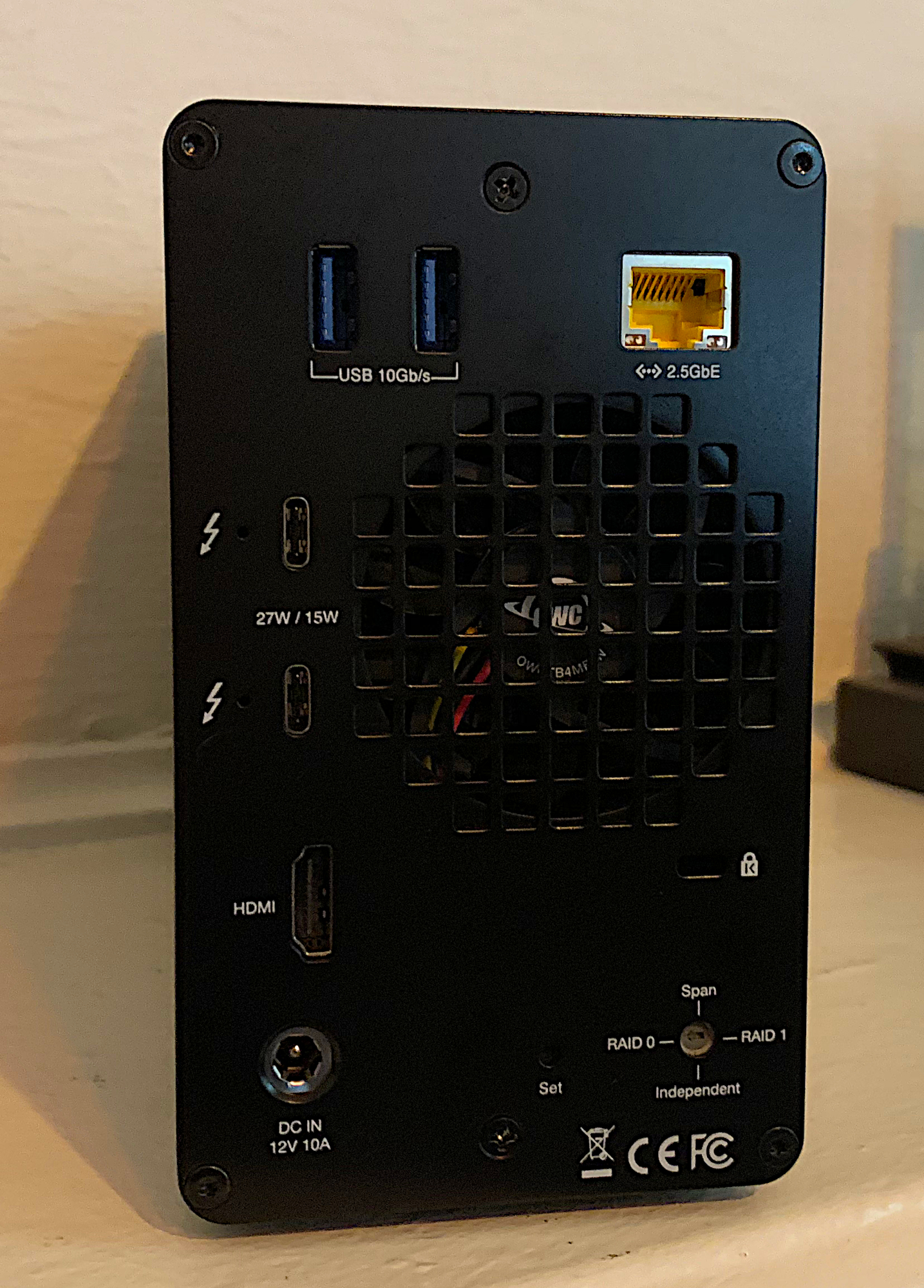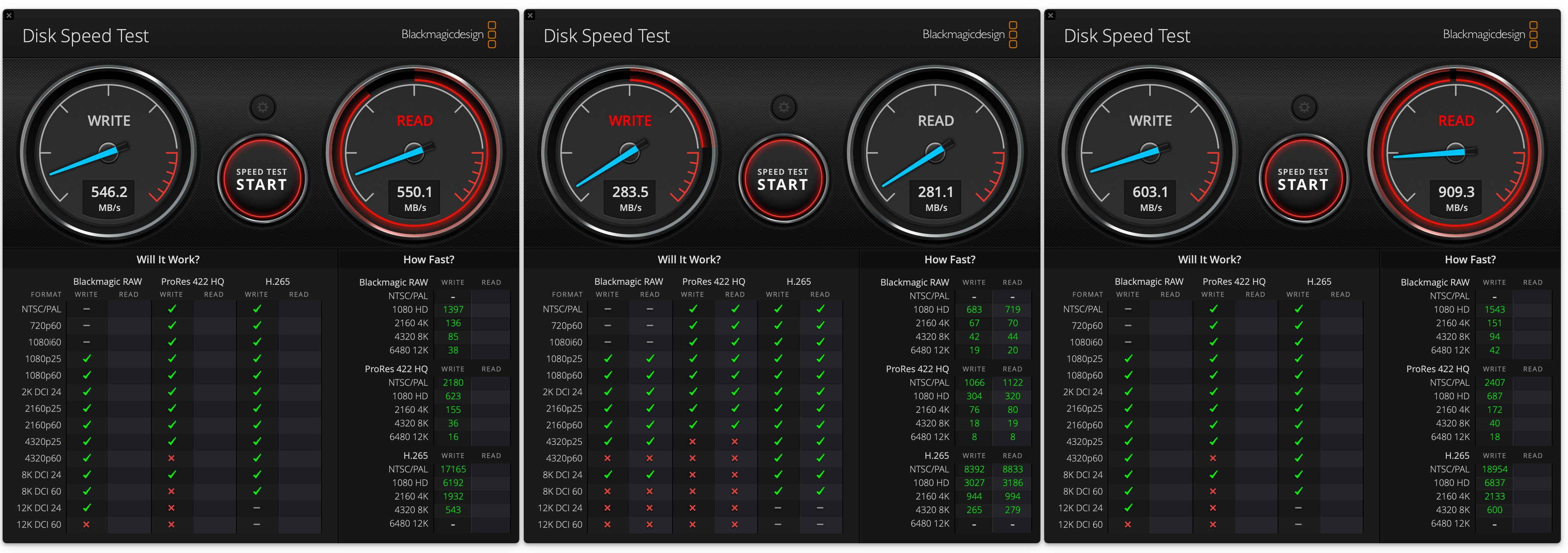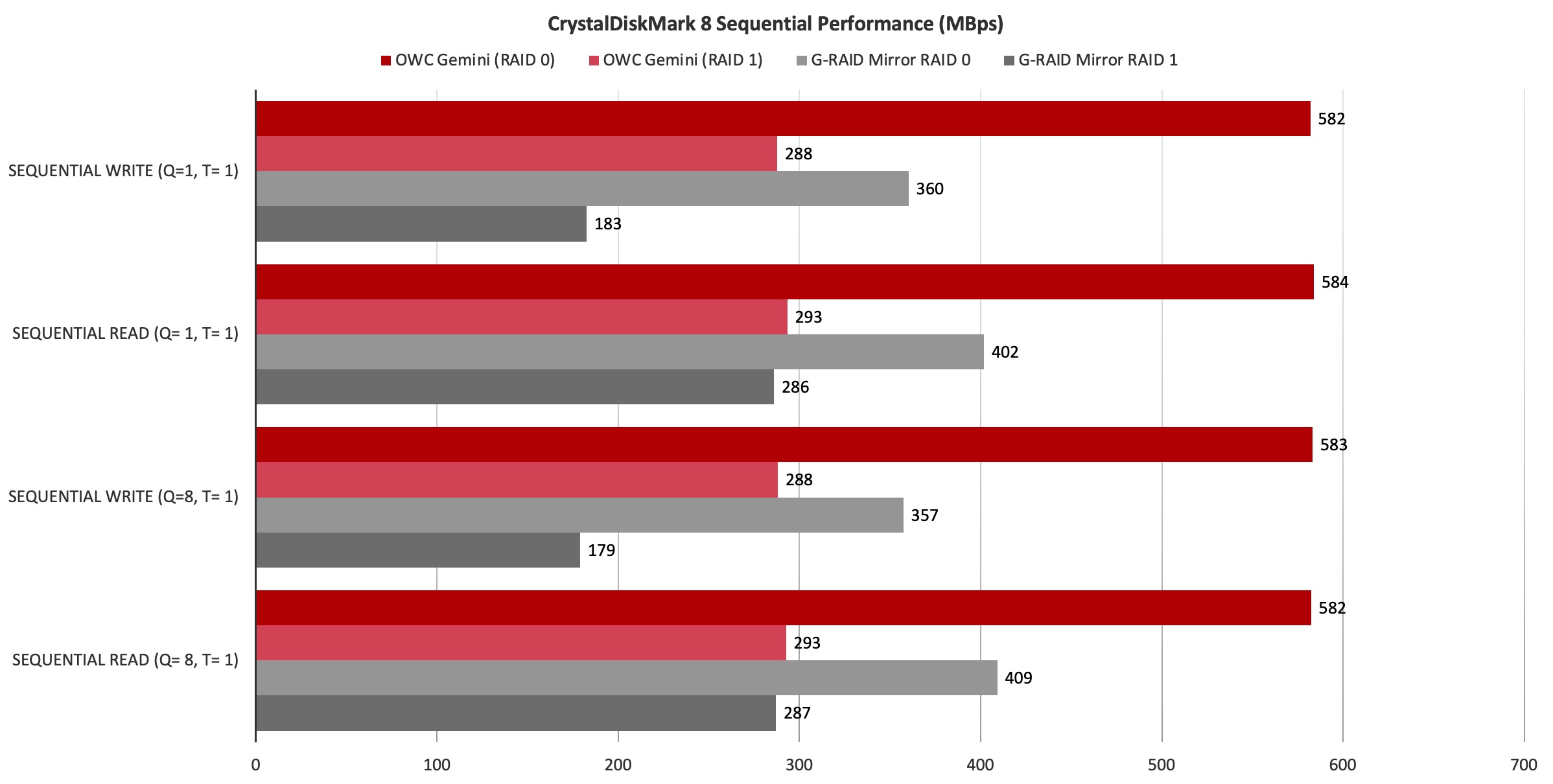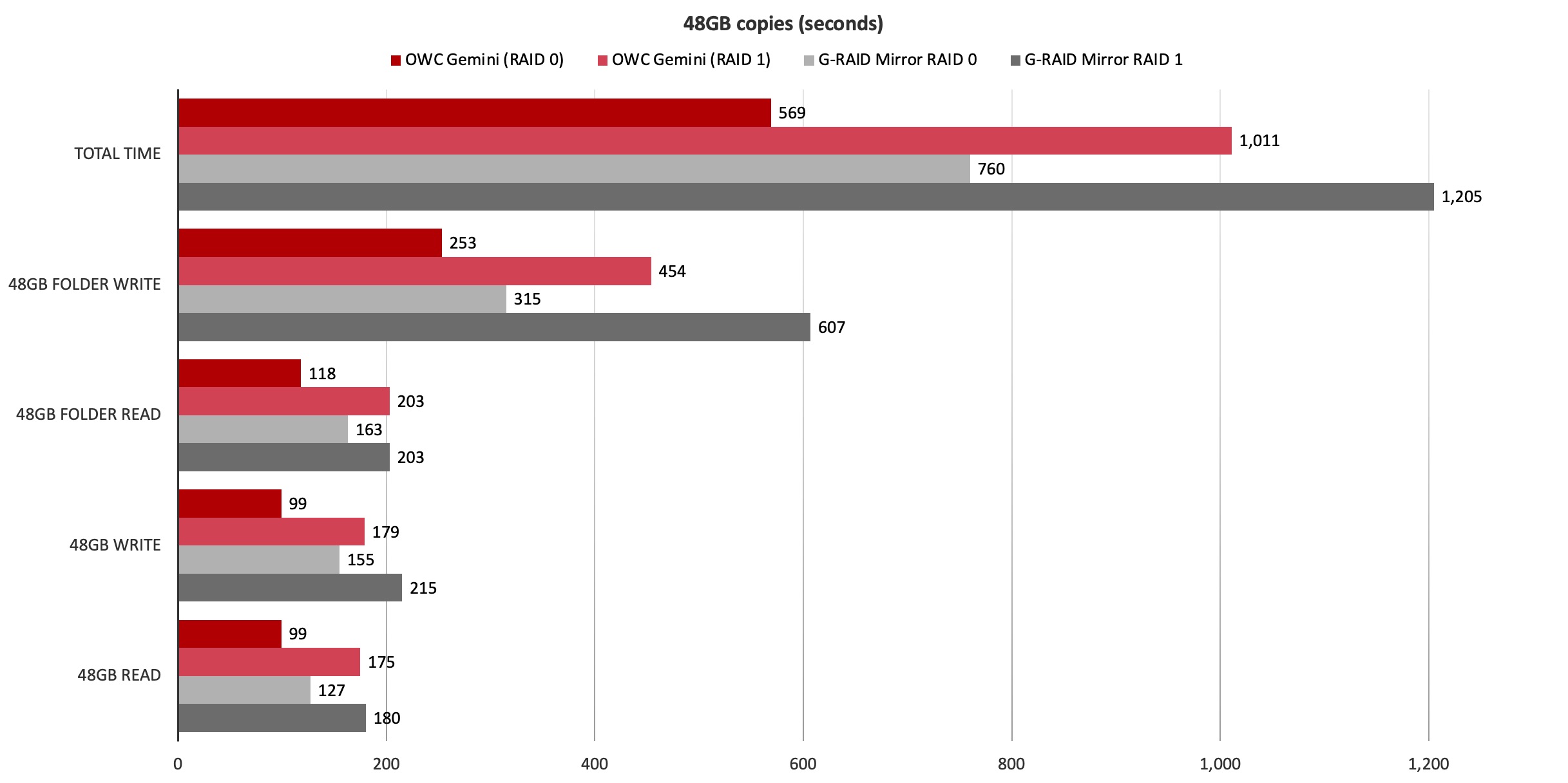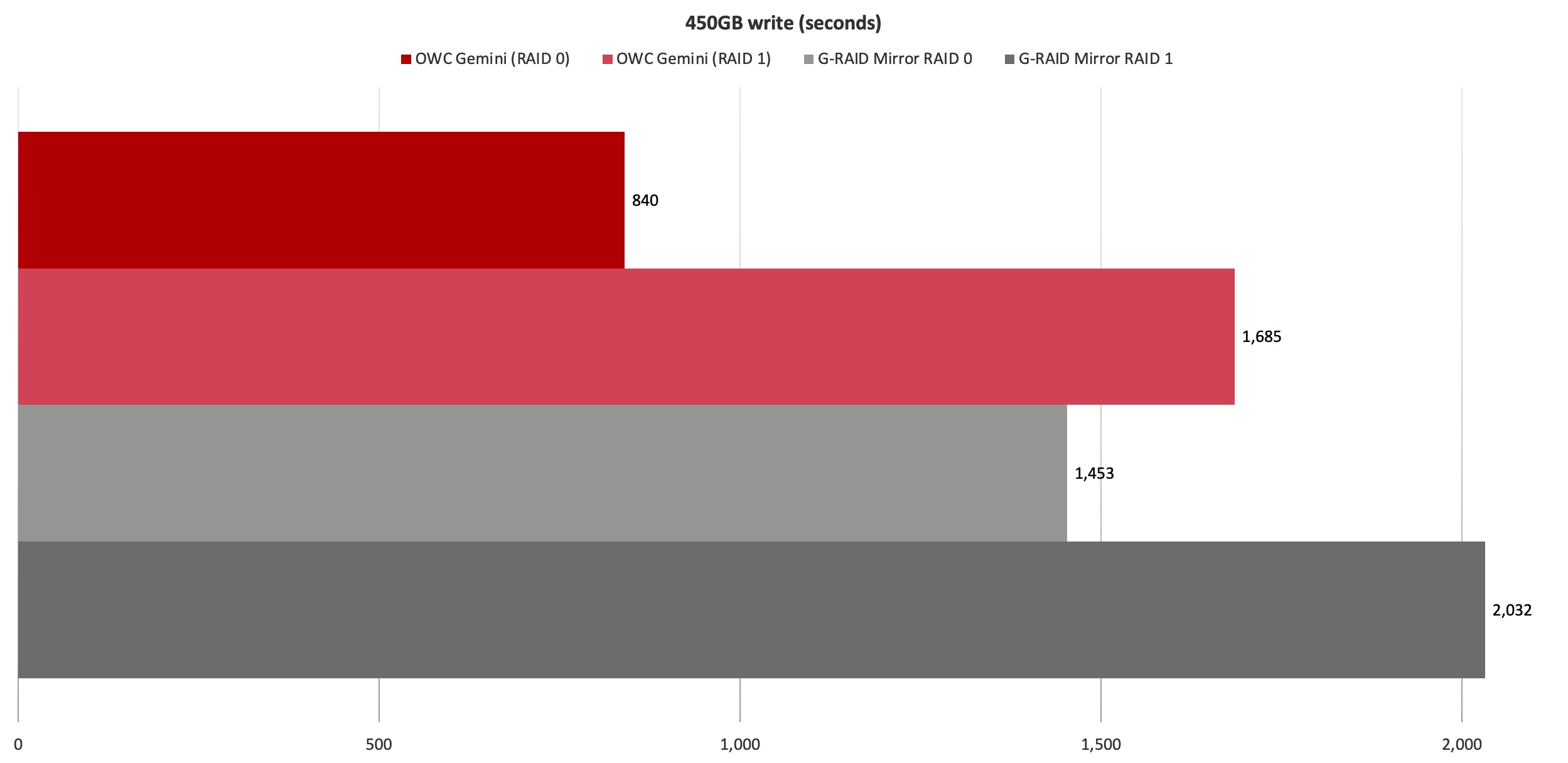Expert’s Rating
Pros
- Nearly 600MBps with HDDS, 900MBps with SSDs
- Hardware RAID
- Accepts 3.5-inch and 2.5-inch drives
- USB, HDMI, SD Card, and Ethernet ports
Our Verdict
Though a bit pricey for pure storage purposes, the fast Gemini Thunderbolt 3 RAID enclosure also offers SD Card, USB, HDMI, and ethernet ports to function as a peripheral hub. Additionally, the RAID is hardware-, not software-based, making it operating system-independent. Nice.
Price When Reviewed
This value will show the geolocated pricing text for product undefined
Best Pricing Today
$299.99
$299.99
Price When Reviewed
$329 unpopulated
Best Prices Today: OWC Gemini Thunderbolt 3 dual-bay HDD enclosure

$299.99

$299.99
OWC’s Gemini, dual-bay Thunderbolt 3 HDD/SSD enclosure trounced the G-RAID Mirror in our testing, making it the fastest HDD RAID enclosure we’ve tested.
While the Gemini will accept 2.5-inch SATA SSDs, its hefty size best suits 3.5-inch hard drives. Why would you consider hard drives in this age of super-fast SSDs? Massive capacity (currently topping out at 32TB per drive!) and the ability to stream even 8K video just fine.
OWC Gemini Thunderbolt 3 RAID enclosure: Features
The most important features of the Gemini are its two 3.5-inch, SATA 6Gbps drive bays. These allow for up to 64TB of capacity (using two of the previously linked Seagate 32TB Exos) running in striped RAID 0, or 32TB in a safer mirrored RAID 1 array. That’s a lot of space for stuff, either way.
The Gemini is stylishly rendered in black metal (not plastic!) with a faceplate featuring fine mesh panels surrounding a solid center panel that houses the activity lights and a full-sized SD card slot.
The enclosure measures approximately 9.5 by 5.5 by 3.25 inches (23.8 by 14.7 by 8.5 centimeters) and weighs about 6 ounces shy of 4 pounds (1.6 kilograms). With that weight pressing non-skid rubber feet onto your desk, this puppy isn’t going anywhere. Especially after you install hard drives that add well over a pound apiece.
My first instinct was to pooh-pooh the need for Thunderbolt 3 with hard drives, which generally can’t use all its bandwidth. But darned if the Gemini didn’t outstrip (marginally) what’s possible with plain USB 10Gbps, which is the norm with less expensive RAID boxes.
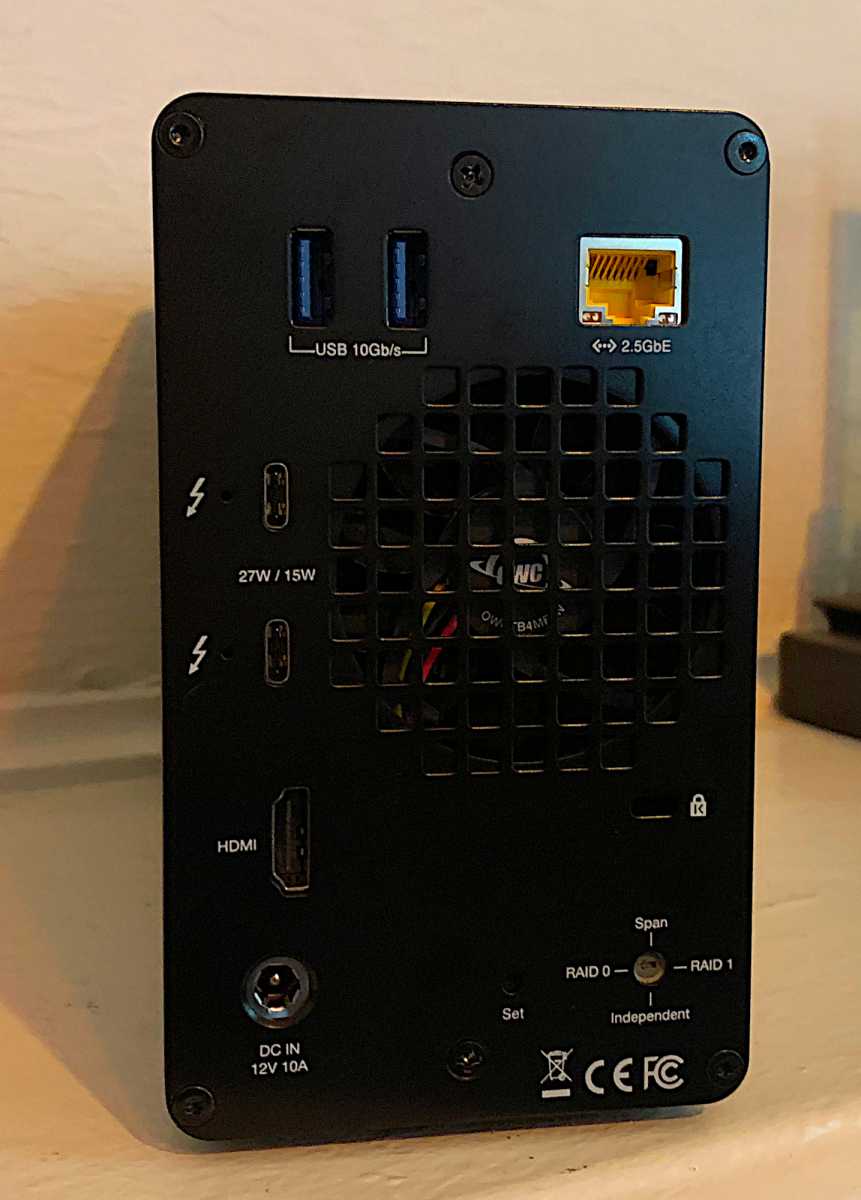
The choice of Thunderbolt also allows the Gemini to serve as a hub; it has two USB 10Gbps ports, a full-sized HDMI display port, and a 2.5Gbps ethernet port in addition to the two Thunderbolt 3 ports and the front SD card slot. The 2.5Gbps ethernet is a nice perk–my home network is 2.5Gbps, as I’ve found it’s fast enough and doesn’t produce nearly as much heat or use as much energy as 10Gbps.
Also on the back of the Gemini is the RAID mode switch (RAID 0, RAID 1, independent, and span), the reset button, a Kensington lock port, and the DC power jack. Speaking of which, the Gemini’s AC adapter is 12 volts and 10 amps which should handle any HDDs you add, as well as the power needs of any attached peripherals
Our Gemini arrived unpopulated, but adding drives is easy. Just remove two screws from the back plate, and you can slide the chassis out for easy access to the side-by-side bays. As noted, both 3.5-inch HDDs and 2.5-inch SATA HDDs/SSDs are accepted.
Gemini Thunderbolt 3 RAID enclosure: Price
Alas, the Gemini ain’t cheap. Even unpopulated it sets you back $330. From there, it’s available in a variety of capacities using either HDDs or SATA SSDs. HDD flavors are 4TB/$470, 8TB/$600, 12TB/$700, 16TB/$800, 24TB/$980, and 40TB/$1030. SSD models will run you $480 for 1TB, $595 for 2TB, $830 for 4TB, and $1350 for 8TB.
Those aren’t outrageously priced like Apple’s upgrades, but you’re still likely to save some money if you buy the Gemini unpopulated and add your own drives. You can of course also leverage anything you have lying around.
Gemini Thunderbolt 3 RAID enclosure: Performance
The Gemini proved surprisingly fast with hard drives in RAID 0. Almost 100MBps quicker than the SanDisk G-RAID Mirror using the same 24GB WD UltraStar DC HC580 HDDs.
Admittedly, these are very fast HDDs. Your performance will vary according to what HDD you use, and I can’t vouch for what OWC ships inside the Gemini. However, most modern, high-capacity HDDs transfer data at 250MBps or better.
As you may also use SATA SSDs, we tested with a pair of them as well. They proved faster. Duh.

Though OWC offers its SoftRAID software that the company claims will deliver better performance, we opted for the Gemini’s hardware variety as that’s part of what you pay for. And if you use a common file format such as exFAT, you can use hardware RAID cross-platform, including on Linux, which SoftRAID does not support.
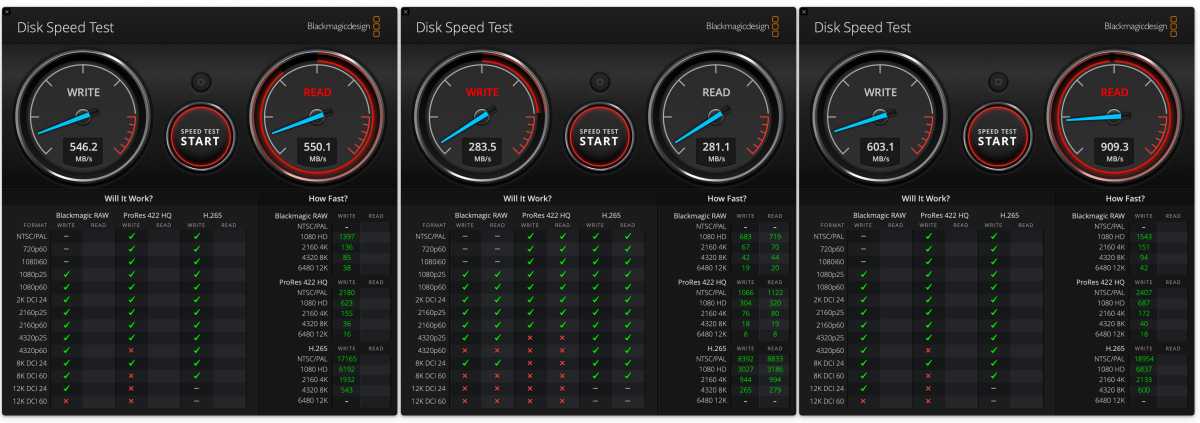
We also ran the HDD configurations through sister publication PCWorld’s test suite. As you can see below, the Gemini summarily trounced the G-RAID Mirror. We’re not sure why, as the SanDisk (WD) product is also hardware RAID and Thunderbolt 3.

Again, the Gemini cleaned the G-RAID Mirror’s clock performance-wise in both our 48GB transfers and 450GB write.
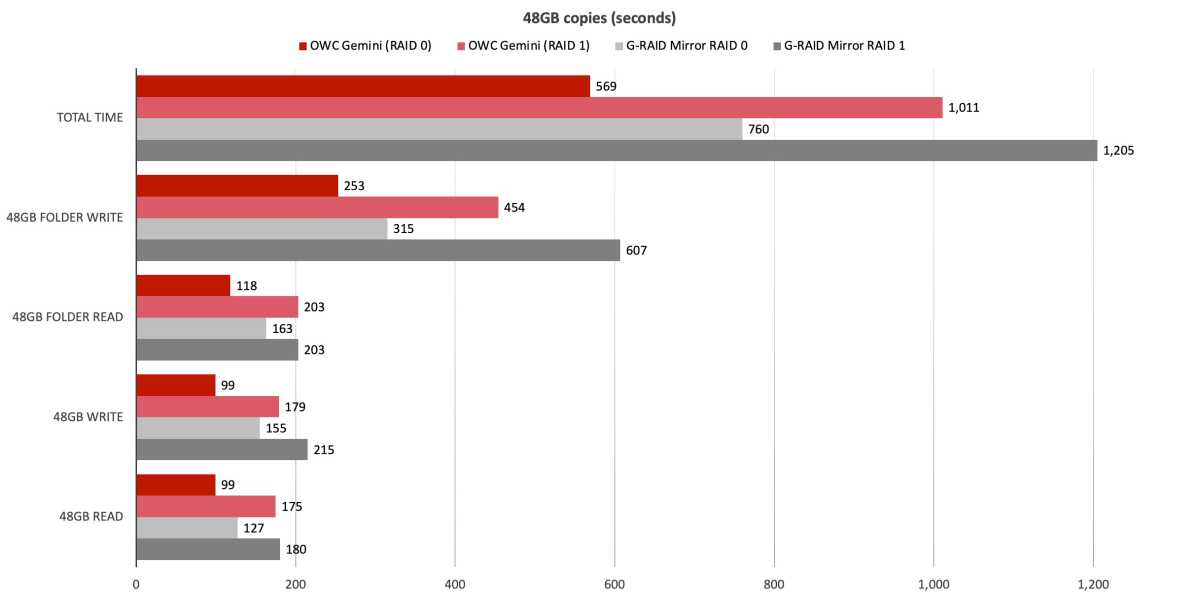
The Gemini was nearly twice as fast in RAID 0 writing a 450GB single file as the G-RAID Mirror (sorry to keep mentioning this SanDisk), which bodes very well for the unit’s performance streaming video.
Again, the type of hard drive you use can impact performance significantly. To the tune of several hundred megabytes per second if you go really cheap.
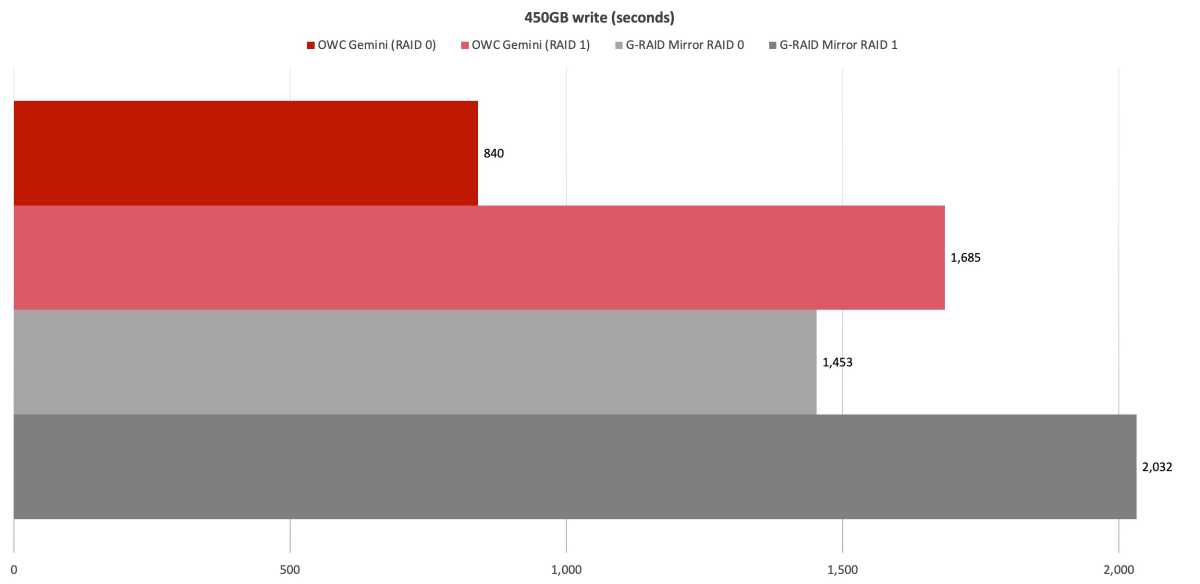
Though the G-RAID Mirror offers the unique Pro-Blade modular NVMe SSD port, which we like quit a bit, the Gemini is otherwise a significantly faster box.
Should you buy the Gemini Thunderbolt 3 RAID enclosure?
If you want very fast, operating system-independent RAID storage, then yes, the Gemini is a great box. It’s pricey, but doubles as a Thunderbolt 3 dock. A most worthy product from OWC.
